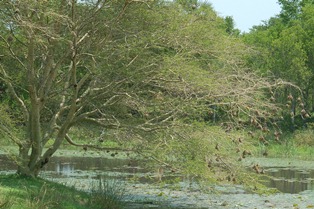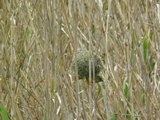PHOWN priority: Village Weaver Ploceus cucullatus

Are Village Weaver colony sizes larger or smaller closer to the equator?
The Village Weaver has one of the widest distributions of weavers in Africa, although its range is limited in southern Africa. There are several subspecies, showing some geographic variation. This species is ideal to study colony variation on a continental scale, especially as this species is fairly common and nests are fairly easy to find within its range.
You can help answer the above question by submitting PHOWN records (with nest counts) for this species and the results will be automatically updated below (as soon as your record has been accepted).
To count large weaver colonies, see the tips below!
For the initial PHOWN priorites that were set read here and to see a map of all PHOWN records for this species see here.
Table 1
This table shows up-to-date variation in colony size in Village Weavers for PHOWN records at different latitudes, at 10 degree intervals.Note: Latitude -30 is [40S to 30S] (range 33S to 30S); -20 is [30S to 20S]; -0 is [10S to 0S]; 0 is [0S to 10N]; etc.
| Latitude | Min | Mean | Max | n |
| -30 | 1 | 46.1 | 205 | 72 |
| -20 | 1 | 29.0 | 350 | 1199 |
| -10 | 1 | 36.4 | 250 | 39 |
| 0 | 1 | 71.8 | 500 | 52 |
| -0 | 1 | 31.3 | 400 | 196 |
| 10 | 2 | 54.1 | 450 | 49 |
Table 2
This table shows up-to-date variation in colony size in Village Weavers for PHOWN records at two latitude intervals.Mean colony size from 33S to 10S = 30.1
Mean colony size from 10S to 15N = 42.1
Currently the average colony size seems to increase with latitude.
Counting nests in large weaver colonies.
Counting the nests of Village Weaver (and some other weavers) requires a little effort - their colonies are often large with up to a few hundred nests.- To count the nests, it is best to walk around the colony and take about 3 counts and then use the average.
- Don't use the maximum since you may have double counted some nests.
- It usually won't work to try and count nests from photos because of nests obscured by branches and leaves.
- It is helpful to use binoculars and stand a few metres away from the colony.
- For colonies in reeds you need to have an elevated view (from not too far away) or wade through the colony using chest waders (if the water is not too deep).










